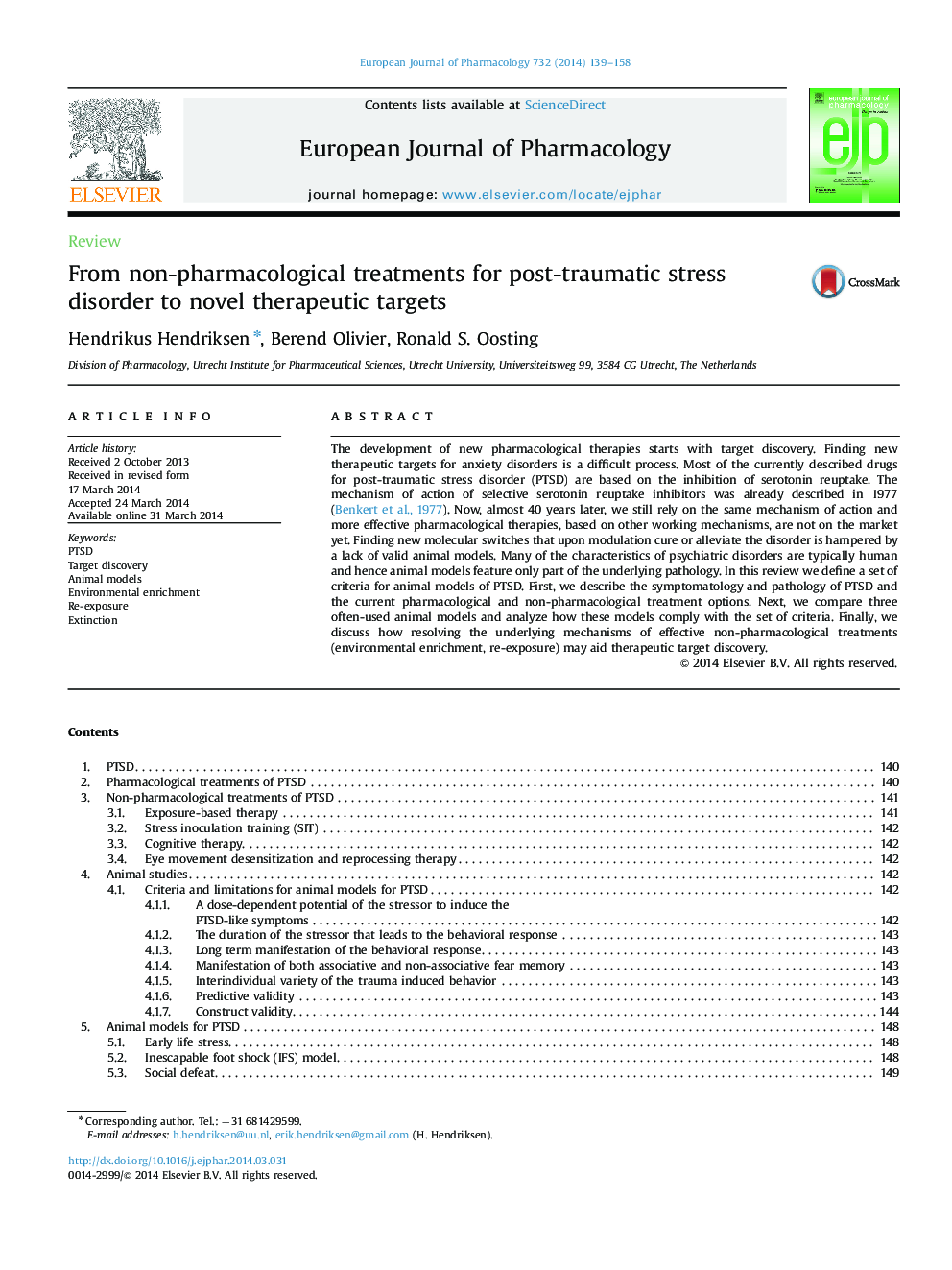| Article ID | Journal | Published Year | Pages | File Type |
|---|---|---|---|---|
| 5828007 | European Journal of Pharmacology | 2014 | 20 Pages |
Abstract
The development of new pharmacological therapies starts with target discovery. Finding new therapeutic targets for anxiety disorders is a difficult process. Most of the currently described drugs for post-traumatic stress disorder (PTSD) are based on the inhibition of serotonin reuptake. The mechanism of action of selective serotonin reuptake inhibitors was already described in 1977 (Benkert et al., 1977). Now, almost 40 years later, we still rely on the same mechanism of action and more effective pharmacological therapies, based on other working mechanisms, are not on the market yet. Finding new molecular switches that upon modulation cure or alleviate the disorder is hampered by a lack of valid animal models. Many of the characteristics of psychiatric disorders are typically human and hence animal models feature only part of the underlying pathology. In this review we define a set of criteria for animal models of PTSD. First, we describe the symptomatology and pathology of PTSD and the current pharmacological and non-pharmacological treatment options. Next, we compare three often-used animal models and analyze how these models comply with the set of criteria. Finally, we discuss how resolving the underlying mechanisms of effective non-pharmacological treatments (environmental enrichment, re-exposure) may aid therapeutic target discovery.
Related Topics
Life Sciences
Neuroscience
Cellular and Molecular Neuroscience
Authors
Hendrikus Hendriksen, Berend Olivier, Ronald S. Oosting,
